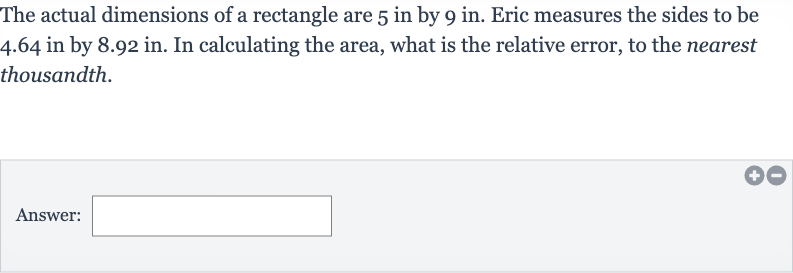Full solution
Q. The actual dimensions of a rectangle are in by in. Eric measures the sides to be . in by . in. In calculating the area, what is the relative error, to the nearest thousandth.Answer:
- Calculate Actual Area: Calculate the actual area of the rectangle using the actual dimensions.The formula for the area of a rectangle is .Actual area = .
- Calculate Measured Area: Calculate the measured area of the rectangle using the measured dimensions.Measured area = .Let's perform the multiplication to find the measured area.Measured area = .
- Calculate Absolute Error: Calculate the absolute error by subtracting the measured area from the actual area.Absolute error = Actual area - Measured area.Absolute error = .Absolute error = .
- Calculate Relative Error: Calculate the relative error by dividing the absolute error by the actual area.Relative error = .Relative error = .Relative error .
- Convert Relative Error: Convert the relative error to the nearest thousandth.To round to the nearest thousandth, we look at the fourth decimal place. Since the fourth decimal place is an , we round up the third decimal place from to .Relative error .
More problems from Percent error: word problems
QuestionGet tutor help
QuestionGet tutor help
QuestionGet tutor help
QuestionGet tutor help
QuestionGet tutor help

